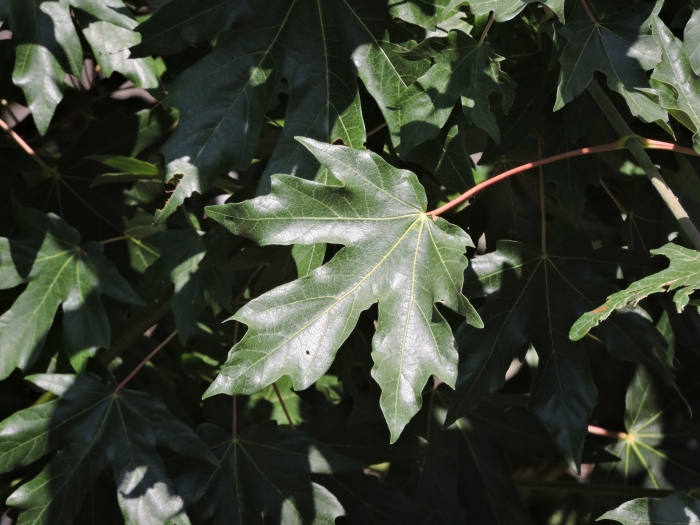Bigleaf Maple
(Acer macrophyllum)
Bigleaf Maple (Acer macrophyllum)
/
/

cwwood
CC BY-SA 4.0























































































Estimated Native Range
Climate Requirements
| • Precipitation | 3" - 141" |
| • High Temp. | 53°F - 109°F |
| • Low Temp. | 3°F - 48°F |
Summary
Bigleaf Maple is appreciated for its grand stature, shade-providing canopy, and especially its vibrant fall foliage. It is used in urban and residential landscapes, parks, and as a street tree. This maple is relatively easy to grow, tolerating a range of soil conditions from well-drained to somewhat waterlogged soils and can thrive in full sun to part shade. While it is adaptable, it prefers moist, fertile soils. It is not typically prone to serious disease or pest problems, but can suffer from verticillium wilt and phytophthora root rot in poor drainage conditions. It is also important to note that the Bigleaf Maple can be a prolific seeder and may become invasive in some conditions outside its native range. Gardeners should be aware of local regulations and its potential to spread before planting.CC BY-SA 4.0
Plant Description
- Plant Type: Tree
- Height: 50-115 feet
- Width: 40-75 feet
- Growth Rate: Rapid
- Flower Color: N/A
- Flowering Season: Spring
- Leaf Retention: Deciduous
Growth Requirements
- Sun: Full Sun, Part Shade
- Water: Medium
- Drainage: Fast, Medium, Slow
Common Uses
Bank Stabilization, Bee Garden, Bird Garden, Border Plant, Butterfly Garden, Deer Resistant, Edible*Disclaimer: Easyscape's listed plant edibility is for informational use. Always verify the safety and proper identification of any plant before consumption., Erosion Control
Natural Habitat
Native to moist, well-drained soils of forests, forest edges, and riparian zones in the Pacific Northwest of North America
Other Names
Common Names: Oregon Maple, Pacific Maple, Big-Leaved Maple, Broad-Leaved Maple, Canyon Maple, Big Leaf Maple, Érable À Grandes Feuilles, Jättelönn
Scientific Names: Acer macrophyllum, Acer flabellatum, Acer stellatum, Acer auritum, Acer hemionitis, Acer leptodactylon, Acer macrophyllum var. normalis, Acer platypterum, Acer politum
GBIF Accepted Name: Acer macrophyllum Pursh